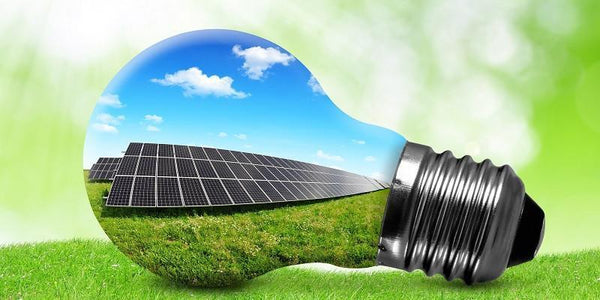Solar Power Blog

Getting Started With Solar: An Introduction
An Introduction to Solar
With so many choices in the marketplace today, getting started with solar powered products can sometimes feel overwhelming. Will you choose to go entirely off grid or partly off grid? Do you want to power just a few of the most important appliances in the home (or business) or do you want to have a complete system using solar powered tools? What do you do about cloudy and rainy days when there is little or no sun?
It doesn’t have to be complicated! You can start learning what your options are regarding solar energy, begin with a small investment, and add to your system as time and budget allows.
The solar industry is growing in popularity. According to the U.S. Solar Foundation, the solar industry added $84 billion to the US GDP in 2016. Solar jobs in the United States have increased at least twenty percent per year for the past four years, and jobs have nearly tripled since the first Solar Jobs Census was released in 2010. Over the next twelve months, employers surveyed expect to see total solar industry employment increased by ten percent, as reported by the foundation.
Government agencies and utility companies offer a variety of tax credits, rebates, and other incentives to support energy efficiency, encourage the use of renewable energy sources, and support efforts to conserve energy and lower pollution. Visit the United States Department of Energy’s web site, Energy.gov, for a list of nationally available rebates. Keep in mind that most rebates have certain restrictions that you must meet in order to qualify. Do your online homework first, and don’t be afraid to make a call to a certified and reputable company in your city to talk to a representative and ask questions!
Starting Out With Small Investments
If you have a small budget, one popular way to get started using solar energy products is by adding a few outside solar panel garden lights to replace electrically powered porch lights, driveway lights, or lights for a garage or outbuilding. If you have an outdoor space that you like to use for cookouts or entertaining, replace a few of those electric lights with solar backyard lights!
When you’re ready to move up to a simple solar system, it’s helpful to know what the components are and how they work.
System Components
A photovoltaic system (PV system) is a power system designed to supply usable solar power by means of photovoltaics, which produce energy from sunlight. The sunlight is gathered in solar panels.
The PV panels come in different sizes and are the single biggest expense of a PV system. Their placement and mounting need to be specifically arranged and affect system performance, so make sure you hire a qualified installer to do this work. Again, the government rebates will require that the installer is certified.
Mounting equipment is another part of the system. You will need to mount the panels where they’ll get maximum sunshine and be secure in case of winds and storms.
Every system must have a DC-to-AC (direct current to alternating current) inverters. Inverters take the low-voltage, high-current signals from the PV panels, making them energy compatible with electrical grid power. The system also uses wiring and connections between the components and the utility power meters.
In states like Florida, California, and Texas (places that receive a lot of sunlight), solar use is very popular, and the utility companies there already have a standard policy for how solar works with the grid. Every state and city government has specific laws regarding these systems, so make sure you and your installer comply with government standards for connecting to the grid. This is for the safety of all customers using energy through that utility company.
Larger Systems
When you’re ready to make a substantial investment in a solar energy system for your home or business, you’ll make a positive change for both yourself and the planet.
To ensure the consistency and quality of PV systems and increase consumer confidence in system performance, various groups — such as the Institute of Electrical and Electronics Engineers (IEEE), the International Electrotechnical Commission (IEC), and the American Society for Testing and Materials (ASTM) — are working on standards and performance criteria for PV systems.
Thanks for reading today’s post and we hope this served as a great incentive for going solar! Feel free to check out Solar Us Shop’s inventory of solar gadgets and solar lights for home and garden decoration!


Sunline Energy says...
What does it imply that your solar systems come in different Kilowatt sizes? I have a 20-panel, 6.5 Kw system.
On March 16, 2023
Sunline Energy says...
very helpfull your blog
On March 16, 2023